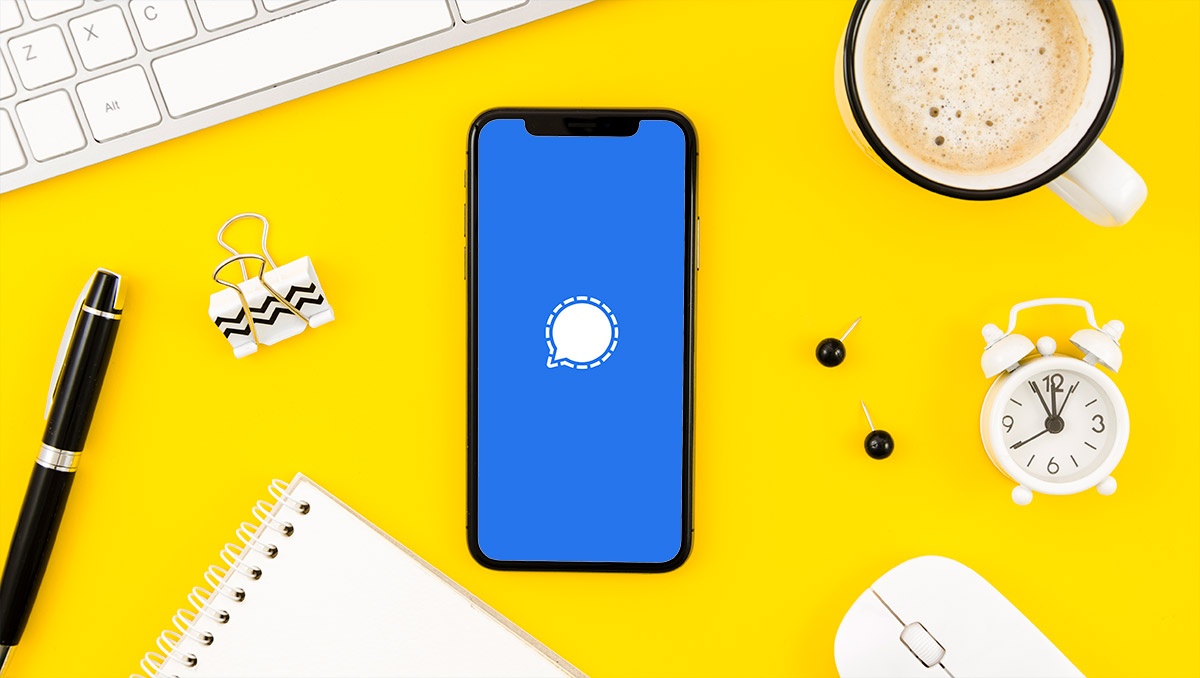Features:
A lean newsroom’s blueprint for gathering secure tips
How we wired together Signal, Twilio and a spare cell phone to create a newsroom phone number for sources who need privacy

(Background image by Freepik)
At PublicSource, we’re all about delving into the heart of stories, exposing truths and championing accountability. We cover everything from local government to health, the environment and education, and we want to ensure that our newsroom is a haven for local sources to share vital information, sensitive questions and concerns.
The conundrum: Bridging accessibility and privacy
One way we embarked on this mission was by using Signal, a secure and encrypted messaging platform. Signal allowed us to share a phone number, opening up avenues for sources to connect with us through text, voice messages, photos and more. However, there was a hitch.
We initially operated our Signal account through a team member’s cell number. But when that person left, it became more evident than ever that tying our account to someone’s personal number presented logistical problems as well as risks of harassment and privacy invasion — definitely not what we had in mind. We knew it was time for a change.
Navigating the solution maze
ProtonMail — an encrypted email service — was our stopgap. It’s secure and can be used through phone or desktop, but we felt that as a single solution, it lacked a sense of accessibility. We returned to the concept of using a phone number. With our local area code, it would feel more deeply rooted here and familiar for the people we’re serving, and we had a proven track record of engaging with our audience through Signal.
Initially, we considered Google Voice to generate a phone number that the newsroom could use for Signal. However, after careful consideration, we ruled it out primarily for reasons of cost and security. Tech-savvy I don’t claim to be, and I still couldn’t figure out how to use Signal without it being tied to a single person’s actual phone number.
One day, I was discussing security training with folks at the Freedom of the Press Foundation, though, and I asked the question on a lark. Turns out they had just the crew to help us out.
The anatomy of our secure tipline
Fast forward to today, and we have a system providing a solution to our lean newsroom. Here’s the breakdown:
- Signal is still our choice for encrypted communication. Its role is pivotal in ensuring that tips are exchanged in a secure environment that can shield the sender’s identity.
- Twilio allowed us to purchase a phone number with a local area code and link it to our Signal account. It provides us with a shared phone number while managing message transactions and associated costs.
- A dedicated phone: By introducing a dedicated newsroom cell phone (we use an older model iPhone) that exclusively runs Signal, we eliminated the vulnerabilities of conventional communication methods. It’s not tied to any individual and doesn’t even need a cell plan — just Signal. We can always build from here if we want, but this is working great for now. (We’re grateful to have received a grant from OpenNews to purchase the phone.)
One caveat is that the Twilio account is linked to a team member’s cell phone, but at least now that person’s number isn’t published and that linking happens in the background. It also allows us to receive text messages from people who aren’t concerned about encryption and, therefore, don’t download Signal. It’s something we need to consider in succession planning but, for now, it still advances our goal of being more accessible.
Overcoming hurdles
The integration of Twilio and Signal presented its own challenges, but with the pro-bono support of Freedom of the Press Foundation, we overcame them. FPF wrote a technical overview that shows how we got our tipline running—including decision points and some of the tradeoffs you might run into with different solutions.
Today, we host a PublicSource “leak to us” page featuring both a ProtonMail address and a phone number for texting. We receive tips through both services and are proud to offer that flexibility to the Pittsburgh region.
Our solution doesn’t demand a hefty budget. The dedicated phone runs the app, and our expenses so far have been around $40 for the year — covering Twilio fees, which fluctuate based on usage. The simplicity of this setup is liberating, allowing us to allocate resources where they truly matter.
What we’ve achieved is replicable. It’s not just about us; it’s about strengthening source protection, fostering trust and propelling local journalism forward. If you’re a newsroom looking to empower your audience and get some solid scoops while you’re at it, consider this secure tipline model.
Credits
-
 Halle Stockton
Halle Stockton
Halle Stockton is a co-executive director and editor-in-chief at PublicSource in Pittsburgh. Reach out to her via email at halle@publicsource.org for more on the secure tipline, fact-checking, co-leadership, lean newsroom operations and networking in general.



